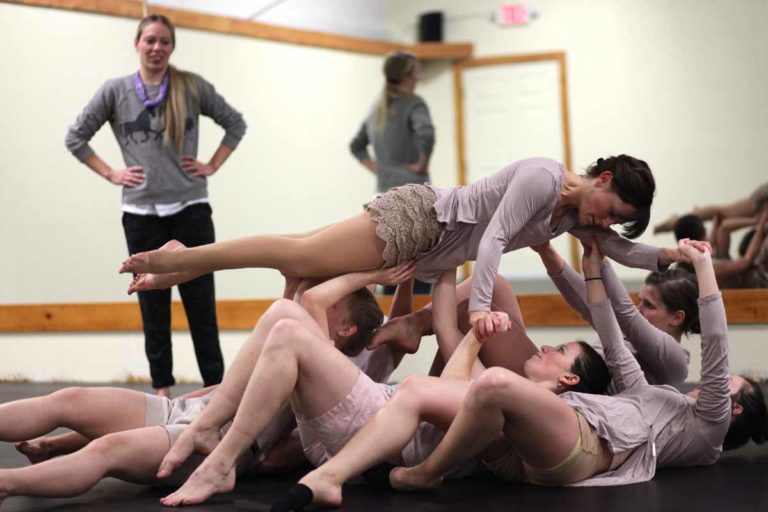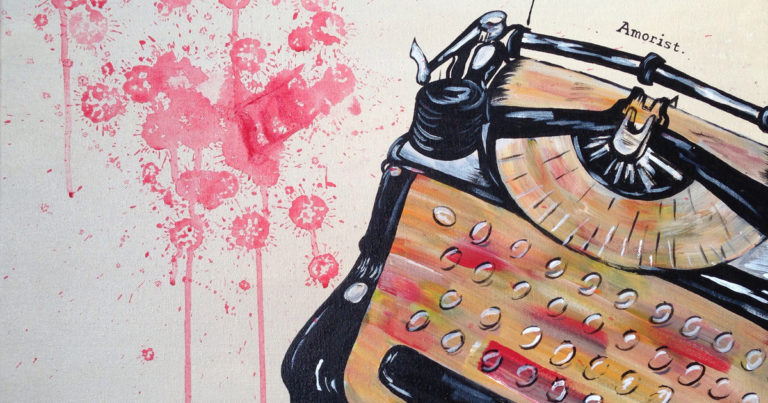Till Death…Or We Part
The magazine pitch: Always the bridesmaid. The gist:“All your friends are getting married. Talk about weddings from your perspective…like getting fitted for a dress you will hate, or helping plan a party, or how over weddings you are…trying to be happy for your friends while you reserve your sense of inevitable doom,” assigns my editor.
My face: Pursed.
My initial reaction: Oh, you want the 30-something divorcee to weigh in on marriage? Over my dead body.
I’ve got nothing against marriage. I think everyone who wants to get married should have the ability to do so. Not everyone who has the ability to get married should.
I reference my marriage rarely. Like a knee-jerk reaction, it comes out socially only when I’m trying to relate. “Oh, it was a great wedding,” I say. “I’d do it all again, just pick a different guy.” This usually nets a few awkward chuckles and sympathetic glances.
I recall with mysticism myself as a 20-something, ready to say, “Till death do we part,” especially given the way we were able to revoke those vows. Turns out, marriage for us was, “Till death, or we part.”
It’s in the Secret Meetings of the Bitter Divorcees where I feel most comfortable discussing what is often labeled as a failure. “Failed marriage” survivors, I’ve found, have many of the same relationship fears and regrets. We didn’t get married thinking it would end or that we picked the wrong spouse. We ponder how the life we once lived, which started out so blindingly good, could be diminished to a paper trail. Untangling one’s self from exes is painful. Untangling from a marriage is downright nasty. My ex still shows up on my credit report.
This is not to imply that I’m “over” weddings, as my editor implied. I love love, and nowhere is it more abundant than at a wedding. I’ve been on the sidelines and at the altar, been a therapist, officiator, photographer, florist, caterer, and confidant. I’ve cried joyfully, and I’ve given a few cry-worthy toasts to some of my very best friends at weddings. I’ve talked a tequila-filled bride out of the bathroom on the eve of the wedding. I’ve safety-pinned the gaping bust of a wedding dress closed seconds before the first dance. I’ve been the last one on the dance floor and the first one to the clean-up party.
Never have I seen more love and happiness in one place than at a wedding.
I’ve also seen my fare share of these weddings last. Many still have that new car smell, being less than a decade in—a feat I do not take lightly as I didn’t even last half that.
I Don’t
There’s a lot of jabber on the web about marriage these days, articles accompanied by stock images of single people in wheat fields spinning in circles. “Why working-class Americans aren’t getting married.” “Top 10 reasons it’s fine to never get married.” “Does marriage STILL matter?”
It’s as though the Internet algorithms want us unwed folks to find Zen in the relationship stewpot. Yet, to wed has long been part of our social expectation we’ve been practicing for thousands of years, but that pressure to marry may be easing.
Recent data from the Bureau of Labor Statistics shows that, for the first time on record, single American adults outnumber married ones. According to the Pew Research Center, American adults above the age of 25 who have never been married hit historic highs 2014. Twenty percent, about 42 million people, have never married, compared to 9 percent in 1960, attributed in part to emerging gender gaps, marrying later in life, and cohabitating or raising children outside of marriage.
Marriage may be on the downtrend, but to wed or not to wed remains a point of contention for Americans. The generally held belief that society is better off if people marry and have children continues, yet each year young adults become less likely to marry (even while living with a partner). And for the been-there-done-that adults, only one-in-five currently say they would like to wed again, estimates Pew.
Is marriage going out of style? As younger people render it unnecessary, the ways people approach and talk about marriage has shifted. Waiting to marry can provide an individual opportunity for financial independence and gives them more time to understand the ways they love. Whereas, marriage was once seen as a way to provide stability and family, the contrary is beginning to evolve: to marry and have a family, one must be stable.
Chemical Connections
What comes with a divorce is the ultimate realization that no one is going to take care of you. You’re left to look out for #1. Yet, is this any different for the married population? At the end of the day, there’s no guarantee this person will love you forever, regardless of legal tender that binds you.
Perhaps the overwhelming sense of failure that some divorcees experience isn’t so different from the incredible pressure that some married folks endure: Their marriage could, like so many others, fail.
The question then becomes not about marriage, but about trust. Can you trust this person to have your back? Is this an emotionally safe relationship? We all want to feel safe, satisfied, and connected in all our relationships, and we want to avoid fear, frustration and heartache. When we attach to others to fulfill these needs, we engage our brain’s limbic system—the center of emotion, motivation and bonding.
Happiness, in part, is made through a cocktail of brain chemicals, specifically four neurotransmitters of the limbic system: endorphins, dopamine, serotonin, and oxytocin. Each of these naturally occurring brain chemicals are linked to different aspects of happiness.
Endorphins, which mask pain, act as natural painkillers. Dopamine, released in enjoyable, repeat behavior, activates the reward center. (It’s that warm feeling you get when you’ve accomplished something.) Serotonin provides feelings of value and is tied to self-confidence and pride. Oxytocin, the “cuddle chemical” or “love hormone,” is a bonding molecule. It’s released by touch and physical intimacy, and helps create feelings of trust, reinforcing relationships.
These neurotransmitters are managed by the limbic system, often called the reptilian brain. This primal part of the brain was the first evolutionary leap in our cognitive development—a reward center to train the brain. From an evolutionary stance, dopamine and oxytocin produced by love and sex contribute to survival of the species. Success at a task produces serotonin, a sense of pride that trains the brain to seek more success. Endorphins produced during exercise mask pain, helping the body with its survival mechanisms.
When the brain is in a stressful environment, cortisol, the “stress hormone,” is released. Cortisol functions as the body’s early warning system (fight or flight), originally useful in keeping us alive. In a modern sense, cortisol is manifested by anxiety and stress. For many, that cortisol drip keeps us in a constant state of paranoia, which interferes with our body’s ability to balance hormones.
When we extend trust and have each other’s backs, we’re releasing happy chemicals and reducing the cortisol drip. Essentially, to love is a survival mechanism. To connect is to be human. What we do with those connections is the tricky part.
Making Messes
After my divorce, my need for connection didn’t go away; it became heightened, but I lived without confidence. I forgot what it felt like to trust like no one ever broke it, forgot how to love without fear that I wouldn’t be loved back.
“I forgot what it felt like to trust like no one ever broke it, forgot how to love without fear that I wouldn’t be loved back.”
Yet, as I waned from the cortisol drip and let the limbic system drive, my paranoia declined. My ability to trust amplified, and pretty soon I was wading back into love, getting my happy chemicals from the trust I extended to others.
Relationships, regardless of rings, require incredible amounts of trust, gratitude, and grace—for you and for others—none of which I fostered in my wedded life. Marriage was a net that made me feel, no matter what, I was safe. I believed we were statistic dodgers, a couple who could make it against stacked odds that we would be thinking on a trajectory that led us down the same path.
Problem: We loved the good parts and didn’t talk about the bad. We didn’t allow space between us to grow independently, nor did we help each other in the messy underbelly of life. We didn’t have each other’s backs.
Were we too young? Not ready? There’s no science to the right time to marry, rather a longstanding expectation that if you’re in love, it’s what you do. I don’t fault the institution. It’s not so much age, rather life’s lessons that I lacked. In avoiding loss and rejection and only seeking peace and love, I was avoiding the bigger parts of life, the ones that—if you’re paying attention—prepare you to make better decisions in the future.
This time around, I’m more conscious of the kinds of people I spend my time with, and when we make messes (love is messy), I’m a bit better at figuring out how to resolve that conflict, or know when it’s time to move on.

We’ve all been wounded. We’ve all crashed our hearts for someone we truly believed in. And we’re in this human stew together. How you treat yourself will set the tone for how others treat you. Love, and be loved. Give, and receive. Trust, and be rewarded. It’s in these steps toward connection where love’s chemicals flow into the neural pathways that link us together.
We exist because we love. We love because we’re human. We’re human because we connect, and break things, and make messes. We will have many great loves of our life. So belly flop into love. Face plant for it. Cross continents to get it. Do a double take, a head-over-heels NASCAR crash, an Olympic-swan-dive-karaoke-belting-traffic-stopping-carpe-diem grab for it. Your brain will reward you.






